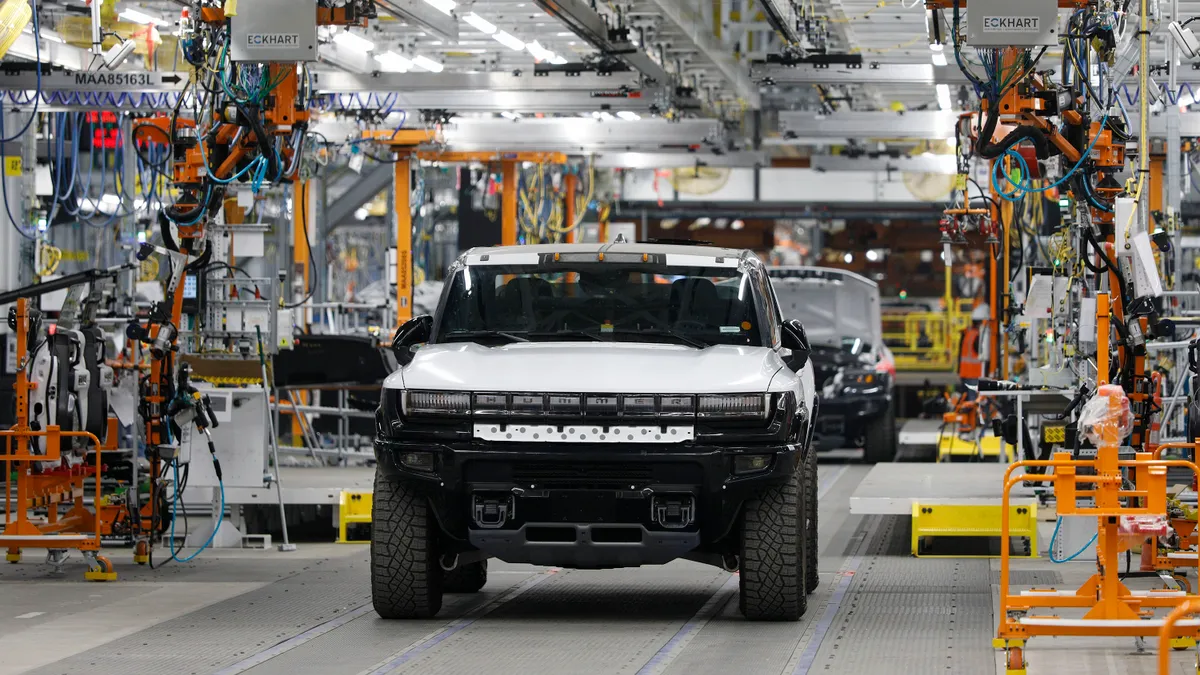Dive Brief:
- Inventories in August saw their highest level of expansion since November 2018 as supplier delivery rates exceeded production levels, according to the Institute for Supply Management's latest manufacturing report.
- Inventory levels rose in August after a month of contraction, according to the ISM's Manufacturing Inventories Index. Delivery rates topping production levels "is a positive indication that the supply chain is finally making headway," ISM Manufacturing Business Survey Committee Chair Timothy Fiore said in the report.
- However, inventories remain unstable due to supplier constraints. Both the transportation equipment and the computer and electronic products industries had parts shortages, but still made significant contributions to inventory gains as work-in-progress products are being held onto longer, Fiore said.
Inventory levels expand as work-in-progress products held
Dive Insight:
Manufacturers of transportation equipment, computers and electronics need chips, which are in short supply, and some products are being held until these critical components arrive. This is true in other industries as well, affecting goods ranging from golf clubs to tricycles, said Erika Marsillac, an associate professor of supply chain management at Old Dominion University.
"A lot of the inventories themselves may be growing for specific parts, but I think there are a lot of things for companies that are still in WIP: work in progress," Marsillac said.
A survey respondent in the transportation equipment industry said to ISM that "production is limited due to supply issues with chips." Another respondent in the electrical equipment, appliances and components industry said business is strong, but parts shortages are the company's largest constraint.
"We cannot fulfill orders to customers in reasonable lead times," the respondent said, according to ISM. "Now booking out into 2022, and it will get worse as we hit our cyclical high demand in the fourth quarter."
Suppliers are still encountering difficulties in meeting this demand and delivering products quickly, Fiore said, pointing to hiring challenges, lengthier lead times for raw materials and inconsistent transportation availability. Sixteen out of 18 industries reported slower supplier deliveries in August, according to ISM.
With lead times for production materials still high in the face of various supply chain bottlenecks, manufacturers are adjusting their operations. Oshkosh, a manufacturer of specialty trucks and access equipment, has had to stop production lines and adjust schedules due to shipping issues and chassis shortages. Ford is increasing its focus on build-to-order vehicles as semiconductor shortages continue to sting the automotive industry.
Manufacturer customers' inventories remain low, with no industries reporting higher customer inventories in August, according to ISM. Large retailers are adapting in their own ways to supply challenges as they restock their stores ahead of peak season, Marsillac said.
"Companies that are either well-positioned to seek out additional suppliers or put resources toward creating new ways to get their supply have put that in place," she said, pointing to The Home Depot's strategy of chartering ships as one example. Companies that have done this "not only survived the pandemic, but in some ways are better positioned than they were before."
For smaller businesses, Marsillac recommends creating supplier redundancy rather than "throwing all your eggs in one basket" and locally sourcing products when possible. When one product is in short supply, businesses can also market a similar product more aggressively.
"Stores that have shortages in one particular product segment but are perfectly fine in a different product segment [are] trying to basically reposition," she said. "Ok, you wanted a pink T-shirt but I don't have any of those. But I have a lot of green T-shirts. Can I try to market the green T-shirts to fill the gaps that I have for pink T-shirts?"
This story was first published in our weekly newsletter, Supply Chain Dive: Operations. Sign up here.















